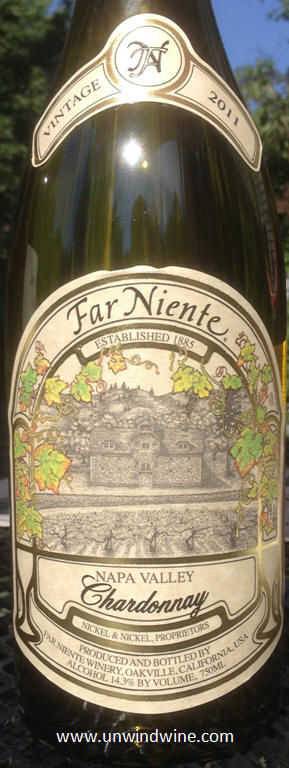Aged vintage wines for family birthday dinner
The family gathered at our house for a gala celebration dinner for my upcoming birthday.
We grilled out cowboy tomahawk ribeye steaks and bbq baby back ribs, and scallops, accompanied by salad, baked beans, mashed potatoes, grilled asparagus and Mac-n-cheese (for the kids).
The cooks, (above) Linda, master chef, and Ryan, griller and carver - naturally absent, missing from the family photo above, (as is Reid who was playing ball out in the yard with friends).
 |
| Grilled scallops on herb buttered toast points |
For a wine accompaniment I pulled from the cellar a Sauvignon Blanc and a Chardonnay for the whites and two aged vintage big reds wines for the beef and ribs, and an aged vintage dessert wine (also a birthyear vintage).
I also selected several younger Right Bank Bordeaux varietal wines, in the event we went through the open bottles, or needed a back-up if the first choice wines were not up to par, due to age or other conditions. Almost regrettably, we didn’t open those wines which I was looking forward to trying, hence they’ll be available for another day.
LaJota Napa Valley Howell Mtn Cabernet Sauvignon 1990
La Jota Vineyards in Napa Valley date back to 1888 when winemaking pioneer W.S. Keyes planted some of the first vines on Howell Mountain. Ten years later his contemporary, Fredrick Hess, built a stone winery and established La Jota Vineyard Co., named for its location on the Mexican parcel Rancho La Jota.
Both men won medals for their Howell Mountain wines in the Paris Exposition of 1900.
La Jota Vineyard Co. continues today as a boutique producer crafting small-production mountain Cabernet Sauvignon, Merlot, Cabernet Franc, and Chardonnay, sourced from the winery’s estate and from nearby W.S. Keyes Vineyard.
Today, Howell Mountain is known for Cabernet Sauvignon in Napa’s rugged northeastern hills with its volcanic ash soils deposited millenia ago by Mount Konocti. Howell Mountain itself is a weathered volcanic "knob" with two distinct soils: crumbly white decomposed volcanic ash known as rhyolitic tuff and red, iron-laden soils of clay and volcanic rock.
La Jota estate vines develop good root systems in these well-draining, porous, nutrient-lean soils, allowing them to self-regulate the amount of water they take in. And the nutrient lean soils force the vines to struggle to survive, forcing their energy to the fruit. The result is tiny berries and clusters with very high flavor concentration.
The soils, shallow and infertile with good drainage, are volcanic ash and red clay and produce highly concentrated berries with thick skins. The resulting wines are full of structure and potential to age.
We tasted the recent release of La Jota Howel Mtn Cabernet at the SoWal (Southwest Walton Beaches) Wine Festival in Destin, (FL) last year was one of the highlights of that event and we acquired their current release of this label at that time - Pour Boys gather for SoWal Wine Festival weekend in Destin.
Today, La Jota’s winemaker is Chris Carpenter, a graduate from the University of Illinois with a BS in biology, who also earned an MBA in Chicago before working various roles in the food and beverages industry. During those years in Chicago he developed a love of food and wine, and a network of colleagues in the business.
After a visit to Napa Valley in 1993, he decided to pursue a career in wine and went on to earn a Masters in Viticulture and Enology from the University of California, Davis.
This release was rated 92 points by Robert Parker back in 1993, when he wrote, this wine should “reach its apogee by the turn of the century and last 20 or more years”.
At 35 years, it has held up remarkably well, despite the tattered label, the fill level and cork were still in great condition, considering their age.
The wine showed no signs of diminution from aging and still well within its drinking window, albeit not likely to continue aging beyond a few more years.
Winemaker Notes - “Where rivers, creeks and property lines usually define an AVA, the Howell Mountain boundaries are defined by a 1,400 foot elevation contour line as the lowest point and the highest vineyards at 2,400 feet above sea level. The vines share the mountain with pines, oaks, madrone and the easternmost stand of the coastal redwoods.”
Opaque garnet/purple colored, medium to full bodied, rich, round concentrated black berry and black currant fruits with notes of minerals, cassis, and classic Howell Mtn spices, with firm but approachable tannins on the lingering, what Wine Spectator calls “fleshy” finish.
RM 92 points.
https://www.cellartracker.com/w?771991
https://www.lajotavineyardco.com/
Château du Domaine de l'Eglise Pomerol 1989
Château du Domaine de l'Eglise is a renowned producer of Right Bank Bordeaux wine, located in the commune of Pomerol, in the shadow of the church tower, and less than two kilometres, within walking distance, of notable producers Château Clinet (300m) and Château Petrus (900m).Today, the Pomerol AOC is renowned for its great wines such as Pétrus, Trotanoy, Clinet, Petit Village and Gazin. The Pomerol appellation comprises around 800 hectares with 140 producers with an average of 6 hectares, producing 31,000 hectolitres of red wine a year.
In 1893, the Bertin family produced ten barrels of wine, rising to twenty barrels by 1949. Simon Landard, Laure Bertin’s nephew, ran the estate a few years later. The estate was acquired in 1973 by Émile Castéja,







































